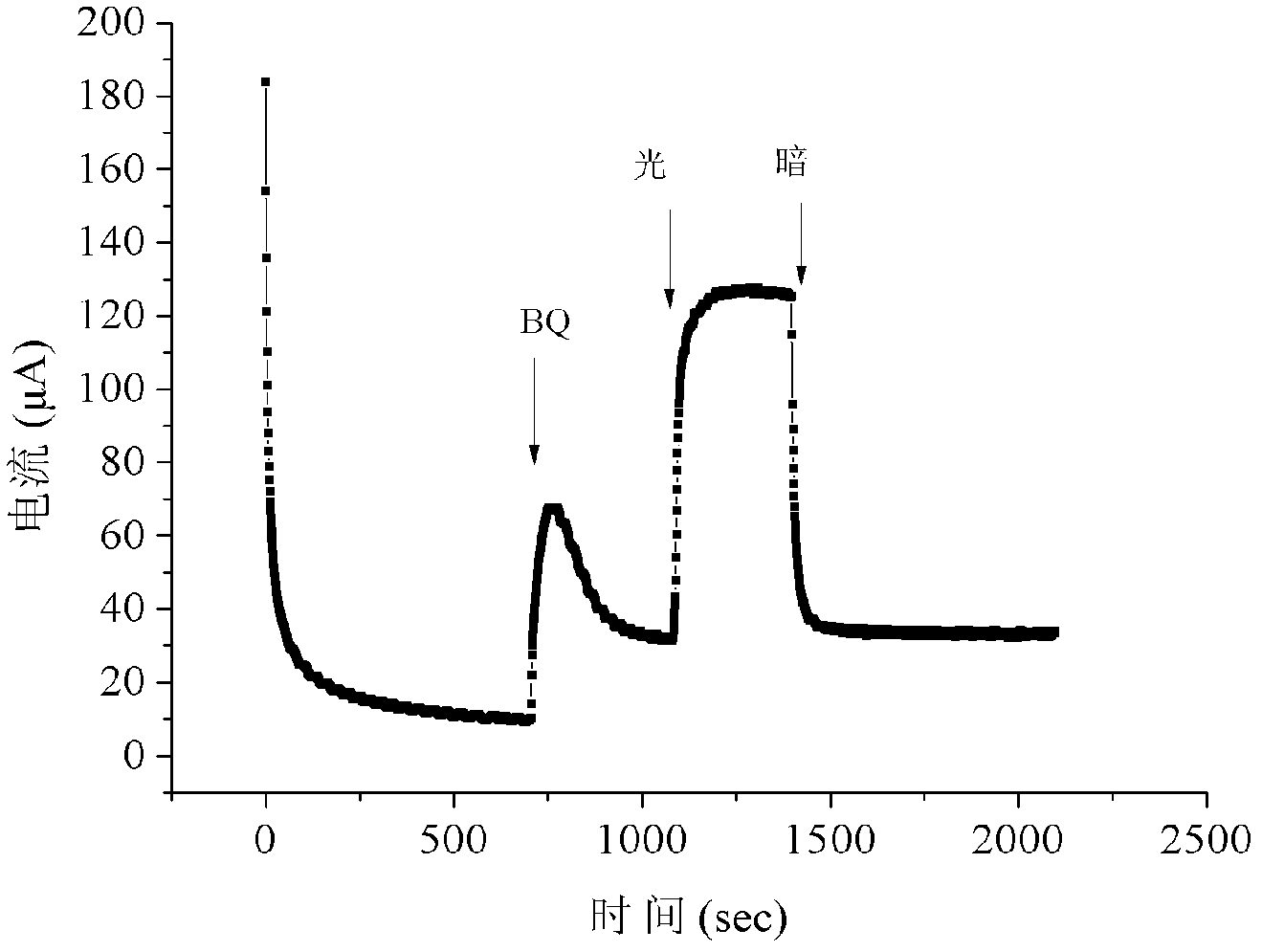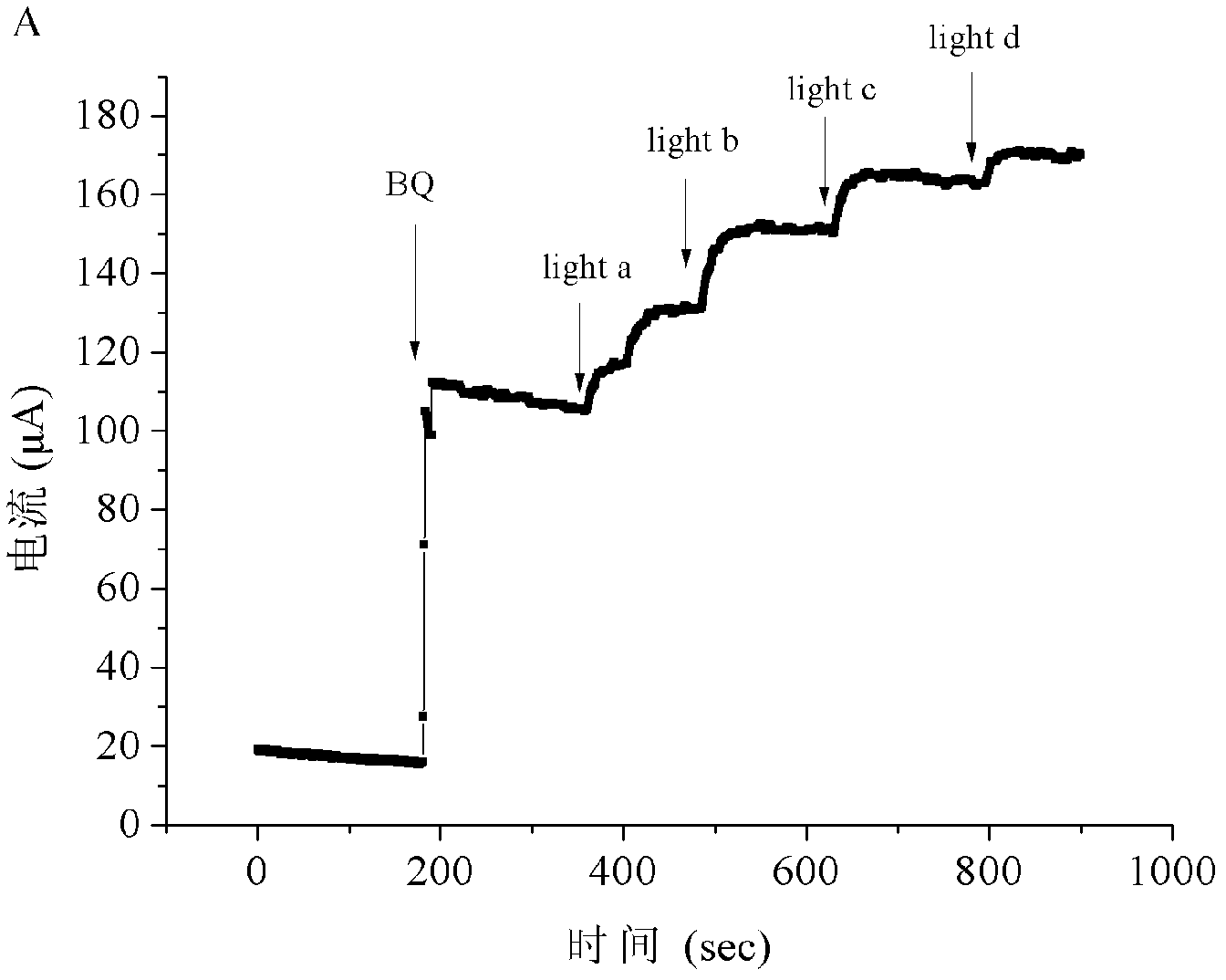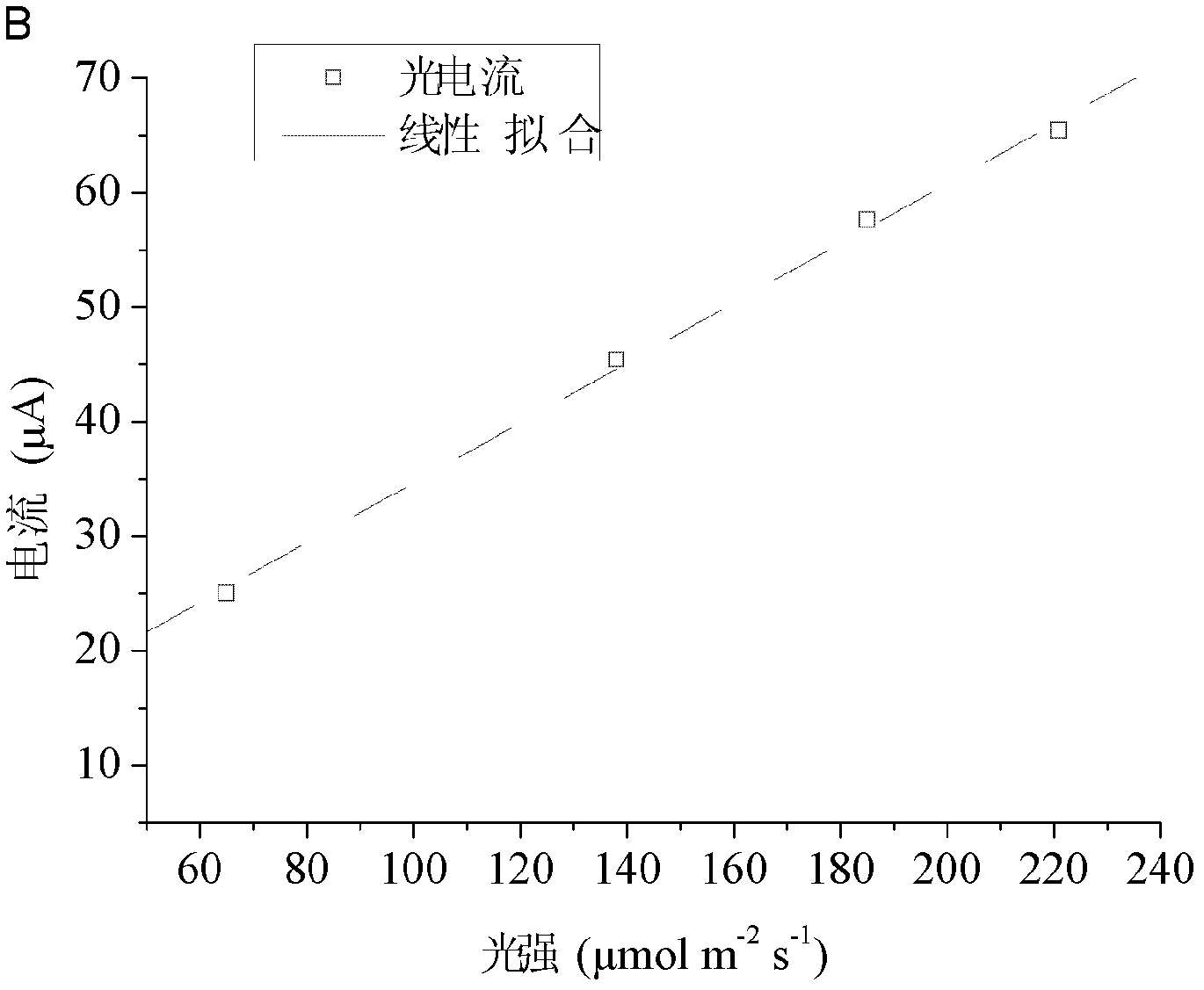Immobilized algae cell bioelectrode, and usage and test method thereof
A bio-electrode, green algae technology, applied in measurement devices, material analysis by electromagnetic means, instruments, etc., can solve the problems of unreported, reduced electron transfer efficiency, etc., to achieve convenient operation, improve electron transfer efficiency, and reduce recycle The effect of combined risk
- Summary
- Abstract
- Description
- Claims
- Application Information
AI Technical Summary
Problems solved by technology
Method used
Image
Examples
Embodiment 1
[0035] The response of the sub-heart-type Tetraphyllum bioelectrode to light
[0036] (1) Preparation of silica sol: slowly drip 10mL tetraethoxysilane into a stirring system of 60mL water and 30mL 0.01M HCl. After reacting for 50h, adjust the pH to 7.50 with 1M NaOH solution, and then react for 48h. The pH is 7.81, and the prepared silica sol is ready for use.
[0037] (2) Take the late growth logarithm, the concentration is about 3.50×10 6 57 mL of subcardiotype Tetraphyllum cells / mL was concentrated by centrifugation at 2000 r / min for 1 min, and the supernatant was discarded to obtain the algal cells. The algae cells obtained by centrifugation were resuspended in 2 mL of silica sol, and the volume of the algae-silica sol mixture was 50 μL in a pipette, and dried in the air to form a green algae bioelectrode.
[0038] (3) In the three-electrode system, the working electrode is a green algae bioelectrode, the counter electrode is a platinum electrode or a titanium electrode, the re...
Embodiment 2
[0041] Light response under different light intensities
[0042] (1) Preparation of silica sol: slowly drop 10mL tetraethoxysilane into a stirring system of 60mL water and 30mL 0.01M HCl. After reacting for 48h, adjust the pH to 7.49 with 1M NaOH solution, and then react for 4 days. The pH is 8.0, and the prepared silica sol is ready for use.
[0043] (2) Take the concentration of about 2.64×10 6 The cells / mL of the subcardiotype Tetraphyllum was 38 mL, the Fv / Fm of the algal cells was 0.754, and the yield was 0.606. After centrifugation at 2000 r / min for 1 min, the supernatant was discarded to obtain the algal cells. The algae cells obtained by centrifugation were resuspended in 1 mL of silica sol, and the volume of the algae-silica sol mixture was 50 μL in a pipette and dried in the air to form a green algae bioelectrode.
[0044] (3) In the three-electrode system, the working electrode is a green algae bioelectrode, the counter electrode is a platinum electrode or a titanium elec...
PUM
| Property | Measurement | Unit |
|---|---|---|
| thickness | aaaaa | aaaaa |
| area | aaaaa | aaaaa |
Abstract
Description
Claims
Application Information
 Login to View More
Login to View More - R&D
- Intellectual Property
- Life Sciences
- Materials
- Tech Scout
- Unparalleled Data Quality
- Higher Quality Content
- 60% Fewer Hallucinations
Browse by: Latest US Patents, China's latest patents, Technical Efficacy Thesaurus, Application Domain, Technology Topic, Popular Technical Reports.
© 2025 PatSnap. All rights reserved.Legal|Privacy policy|Modern Slavery Act Transparency Statement|Sitemap|About US| Contact US: help@patsnap.com



